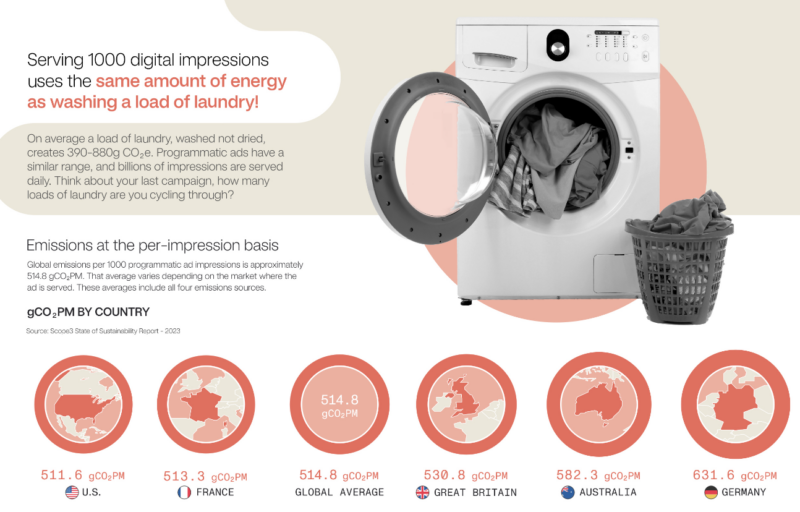Australian programmatic ads the second most polluting globally: Scope3
The Australian programmatic advertising industry is the second most carbon emitting across five major economies, according to data from Scope3.
The company’s report, Q1 2023 State of Sustainable Advertising, found Australia emitted 582.3 grams of carbon dioxide and equivalent greenhouse gases per 1000 impressions (gCO2PM) of programmatic advertising, second behind Germany’s 631.6 grams, and ahead of Great Britain, France, the US and the global average.


